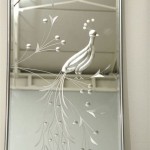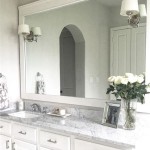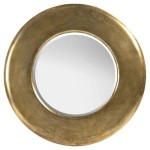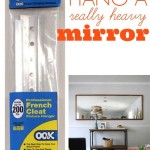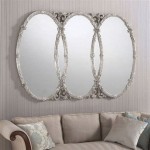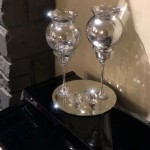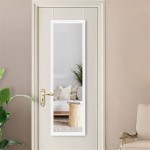Antique Free-Standing Mirrors: A Guide to Timeless Elegance
Antique free-standing mirrors, also known as cheval mirrors, are coveted pieces that transcend time and add a touch of vintage charm to any interior. These mirrors, often crafted from various materials like mahogany, oak, or walnut, boast intricate details, ornate frames, and a timeless elegance that complements both traditional and modern décor. Understanding the history, features, and care of these heirloom pieces can enhance their allure and ensure their longevity.
History and Origins of Antique Free-Standing Mirrors
The origins of free-standing mirrors can be traced back to the 17th century in Europe, where they were primarily used by wealthy individuals for personal grooming and to enhance the grandeur of their homes. Initially, mirrors were crafted with polished metal surfaces like silver or tin, and they were often mounted on wooden frames that were meticulously carved and embellished with intricate details. These mirrors were a symbol of affluence and were often passed down through generations as cherished family heirlooms.
Over time, the production and craftsmanship of free-standing mirrors evolved, with glass becoming the preferred material for reflective surfaces in the 18th and 19th centuries. This period saw the emergence of a wide range of styles, including Rococo, Louis XV, and Regency, each characterized by unique ornamental elements, intricate carvings, and distinctive frame designs. From the ornate and flamboyant designs of the Rococo period to the more refined and elegant styles of the Regency era, antique free-standing mirrors represent a captivating panorama of artistic and historical evolution.
Features and Styles of Antique Free-Standing Mirrors
Antique free-standing mirrors are characterized by their distinctive features, including their large size, ornate frames, and unique design elements. Their size allows for a full-body reflection, making them ideal for both personal use and decorative purposes. The frames are often crafted from high-quality wood and meticulously carved into intricate designs, often featuring floral motifs, acanthus leaves, or geometric patterns. These details reflect the artistic sensibilities and craftsmanship of the era in which they were created.
Antique free-standing mirrors encompass a diverse array of styles, each reflecting the cultural and artistic influences of its time. Some of the most common styles include:
- Rococo (18th Century): Characterized by its elaborate, asymmetrical designs, ornate carvings, and use of shell and floral motifs.
- Louis XV (18th Century): Emphasizes curved lines, graceful curves, and delicate floral motifs.
- Regency (Early 19th Century): Known for its refined and elegant style, incorporating classical Greek and Roman themes, often featuring fluted columns, laurel wreaths, and intricate moldings.
- Victorian (19th Century): Marked by its opulent and ornate designs, often featuring heavy details, intricate carvings, and use of dark woods like mahogany or walnut.
- Art Deco (Early 20th Century): Celebrates geometric patterns, stylized forms, and bold colors, often featuring chrome accents and streamlined designs.
Appreciation, Care, and Restoration of Antique Free-Standing Mirrors
The appreciation and care of antique free-standing mirrors involve a deep understanding of their history and value. Their intricate details, craftsmanship, and age contribute significantly to their value. Regular cleaning and gentle polishing can preserve the mirror's luster. Avoiding harsh cleaning agents and abrasive cloths is crucial to prevent damage to the delicate surfaces. Protecting the mirror from direct sunlight and humidity can help prevent discoloration or deterioration over time.
Restoring an antique free-standing mirror can be a rewarding endeavor. It often involves a careful and meticulous process that requires expertise in handling historical artifacts. Professional restoration services can revitalize the mirror's original beauty by addressing scratches, chips, or imperfections. This process may involve cleaning, polishing, refinishing, or replacing missing or damaged components, ensuring the mirror is restored to its former glory.
Antique free-standing mirrors stand as testaments to craftsmanship, history, and timeless elegance. Their presence transforms a space, adding a touch of vintage charm and sophistication. Understanding their history, features, and care allows individuals to appreciate these heirloom pieces and ensure their enduring legacy.

Framed Mirrors Luxury Mirror Decor Cheval

Antique French Style Floor Standing Mirror Buckingham Black Mirrors

Vintage Cheval Mirror Oak Standing Floor Tilting Sweden

Antique Floor Mirrors

Elizabeth Antique French Vintage Standing Mirror West Mirrors

Antique Carved French Style Floor Mirror Charmydecor

Free Standing Full Length Mirror Oak Cheval Tudor

Vintage Brass Italian Neoclassical Cheval Standing Dressing Floor Beveled Mirror At 1stdibs Antique Free

Antique Full Length Bevelled Keyhole Shaped Standing Mirror

Antique Victorian Carved Oak Free Standing Mirror For At Pamono

